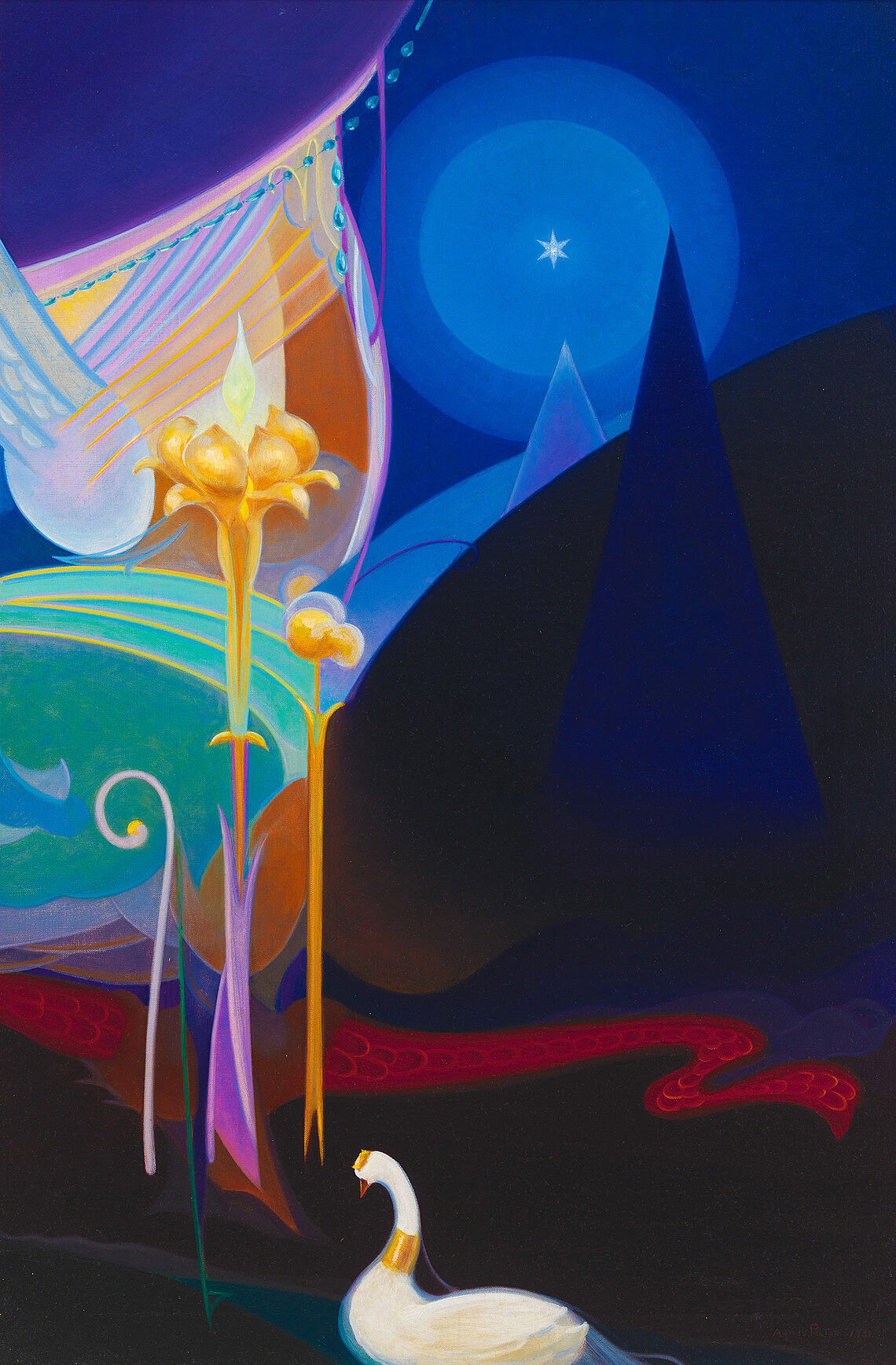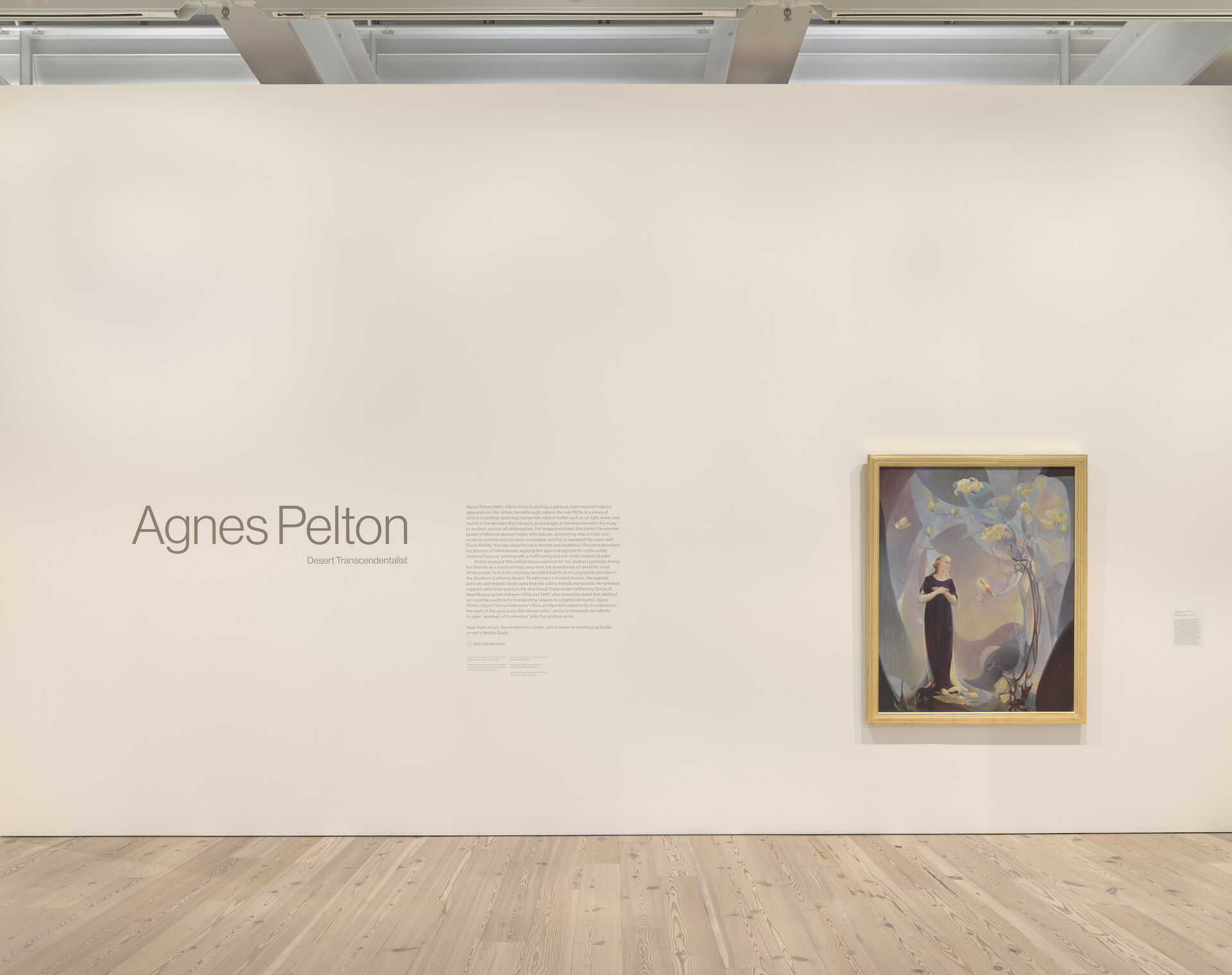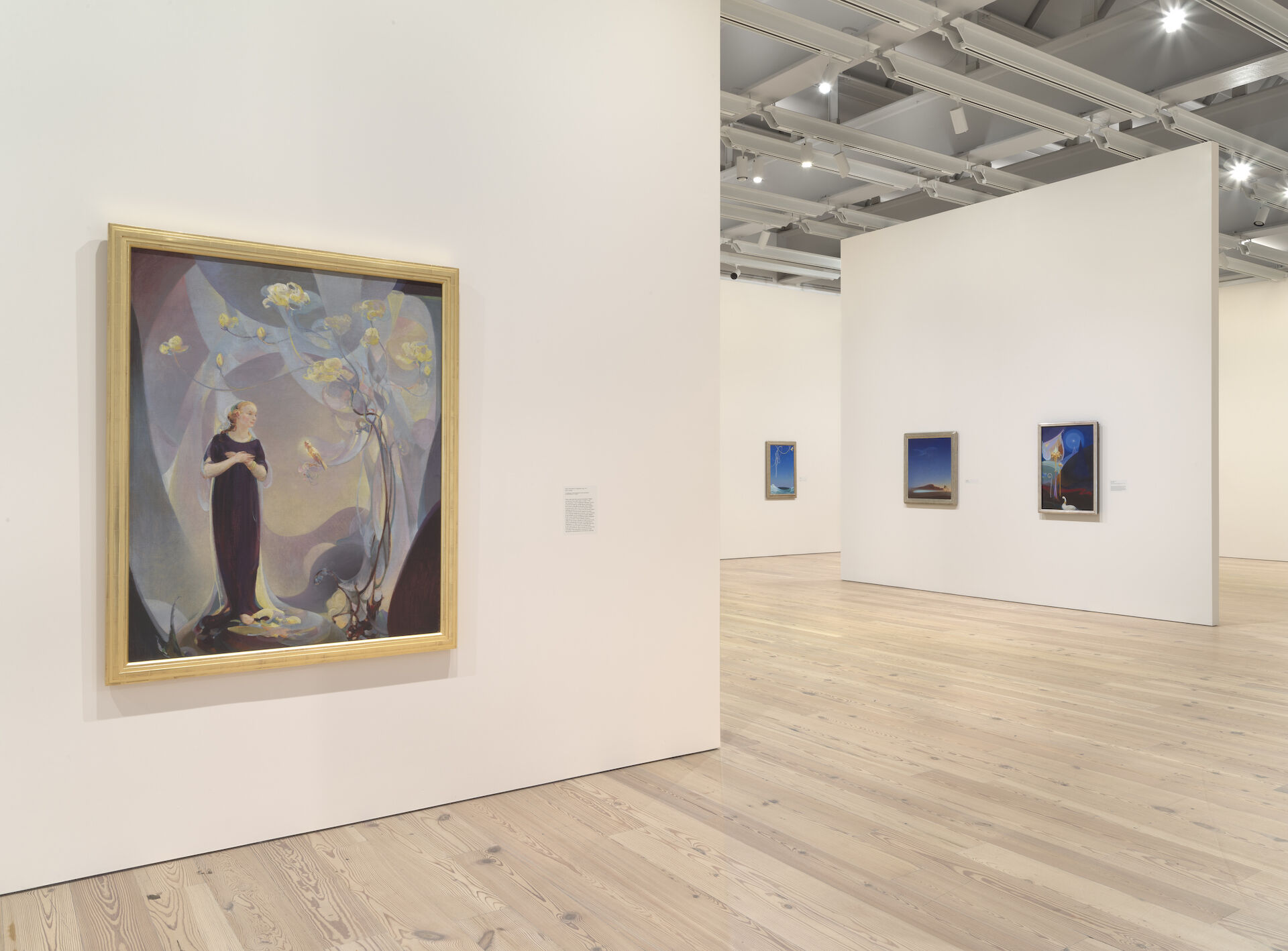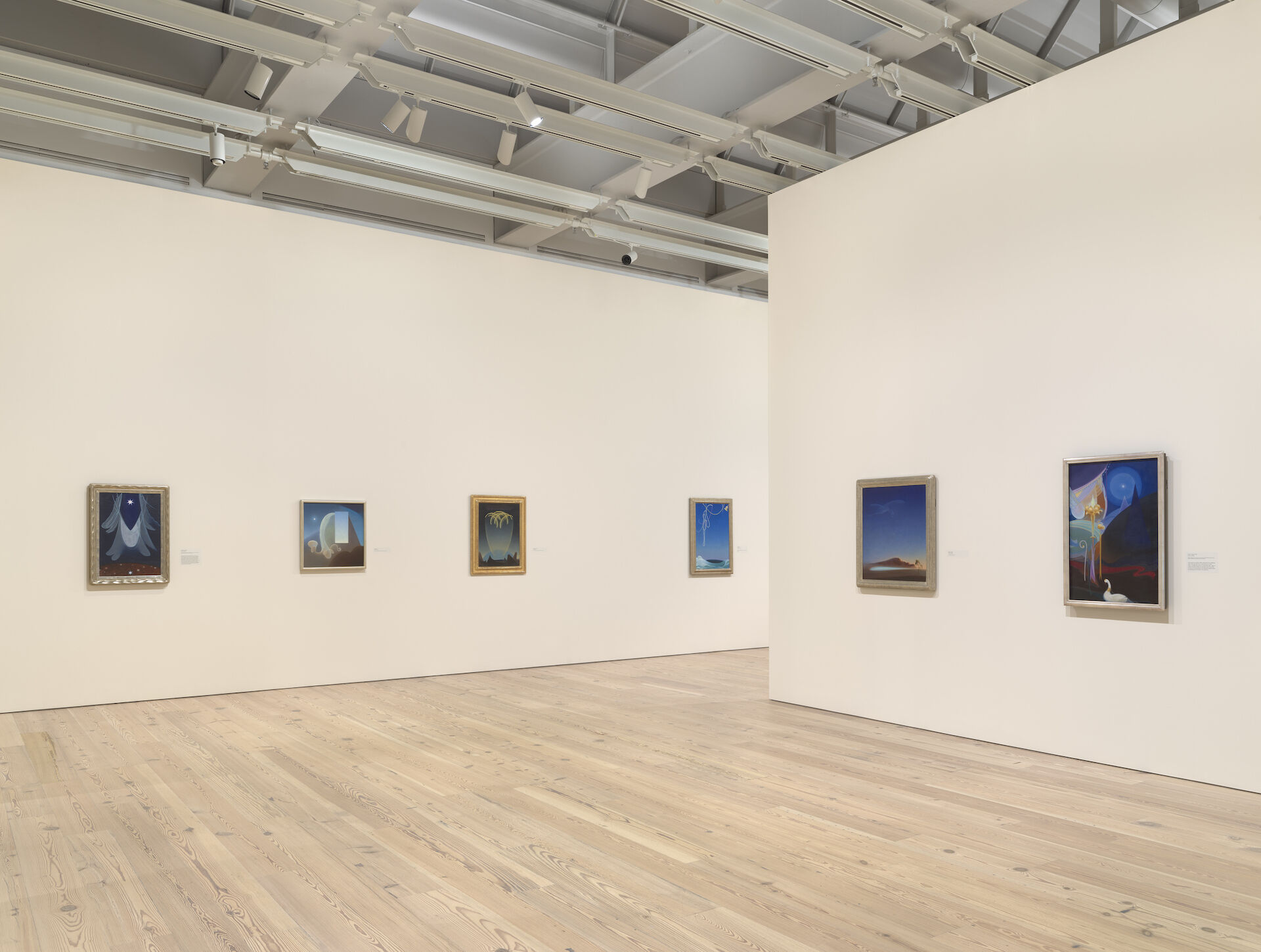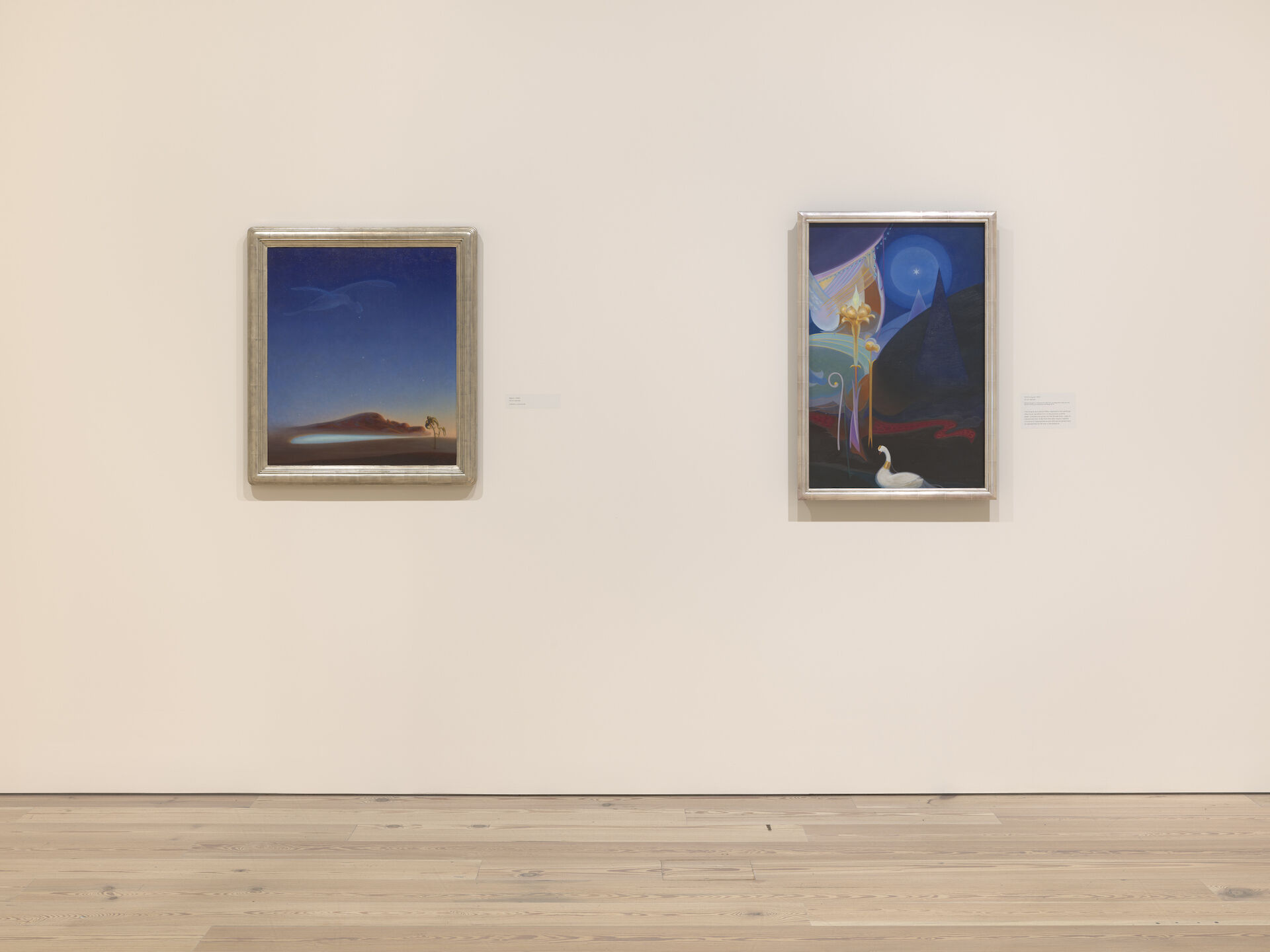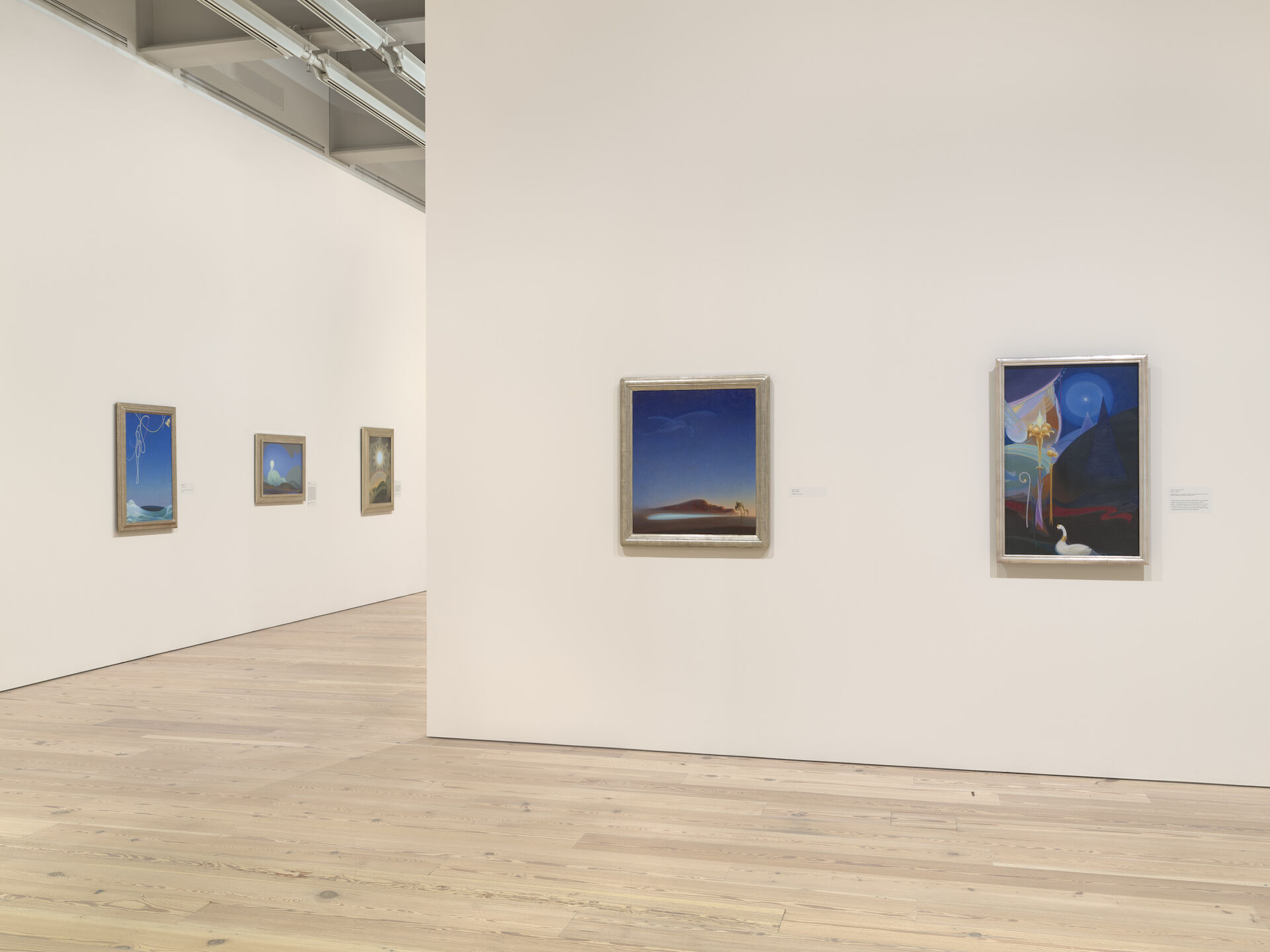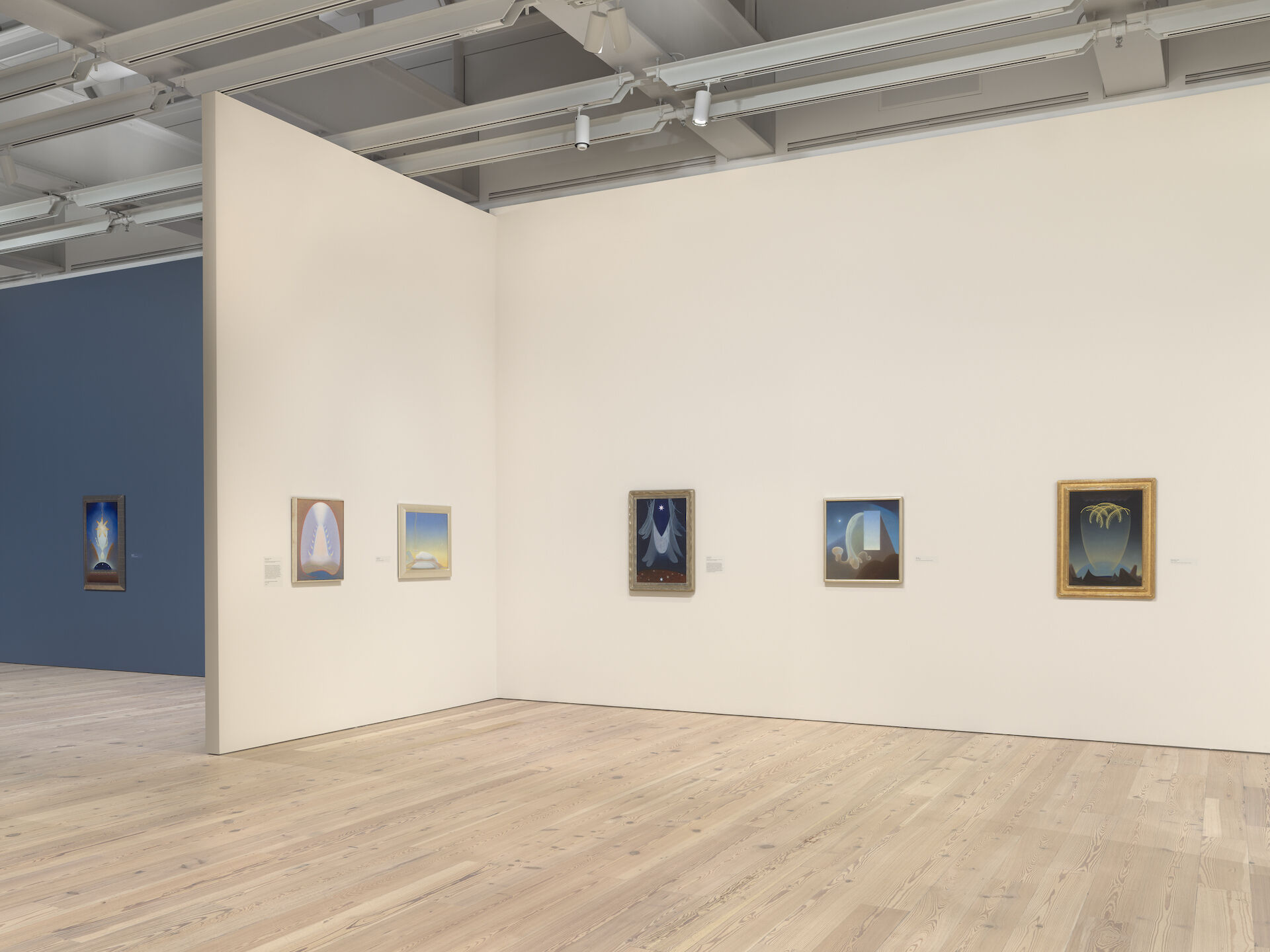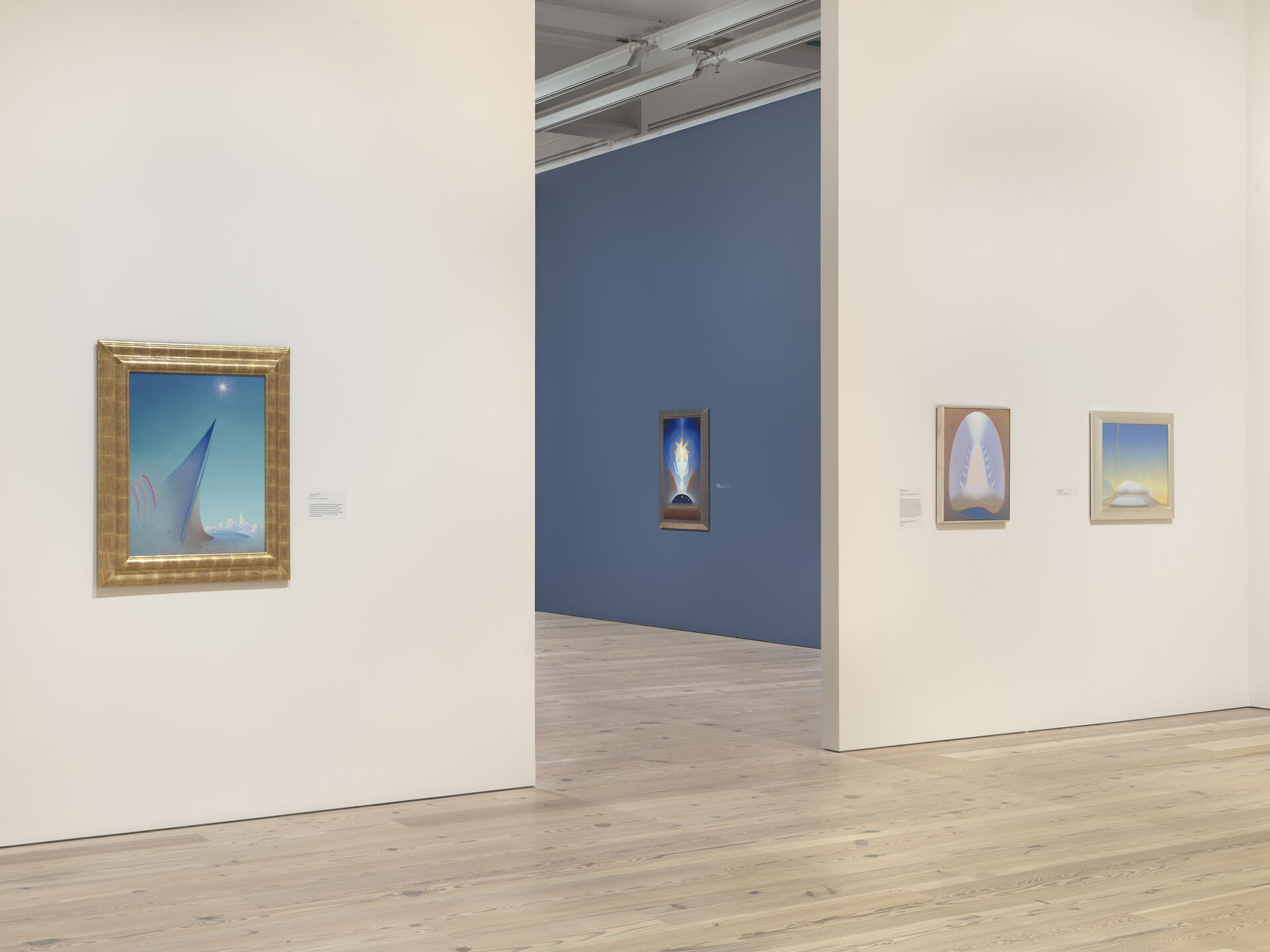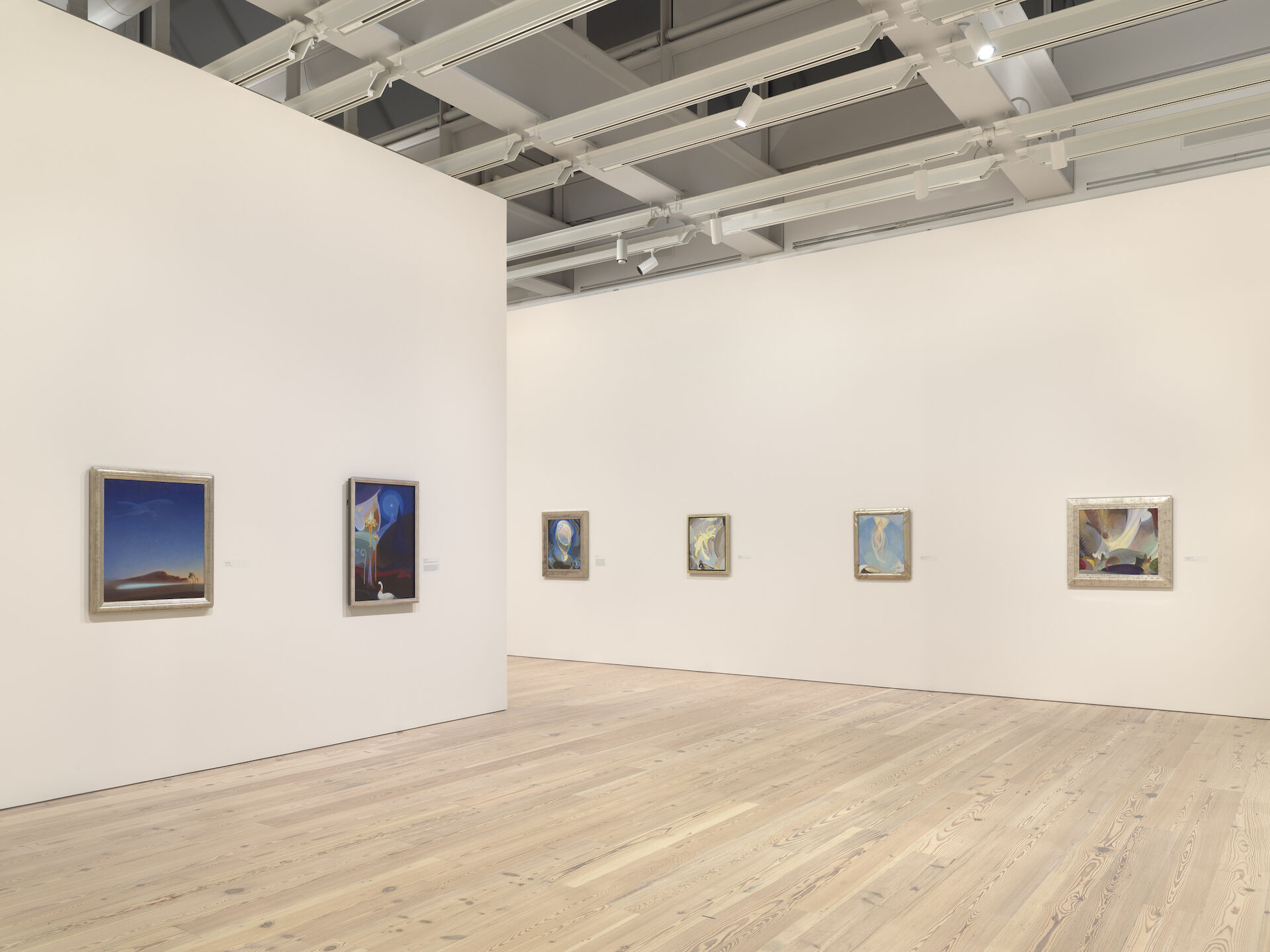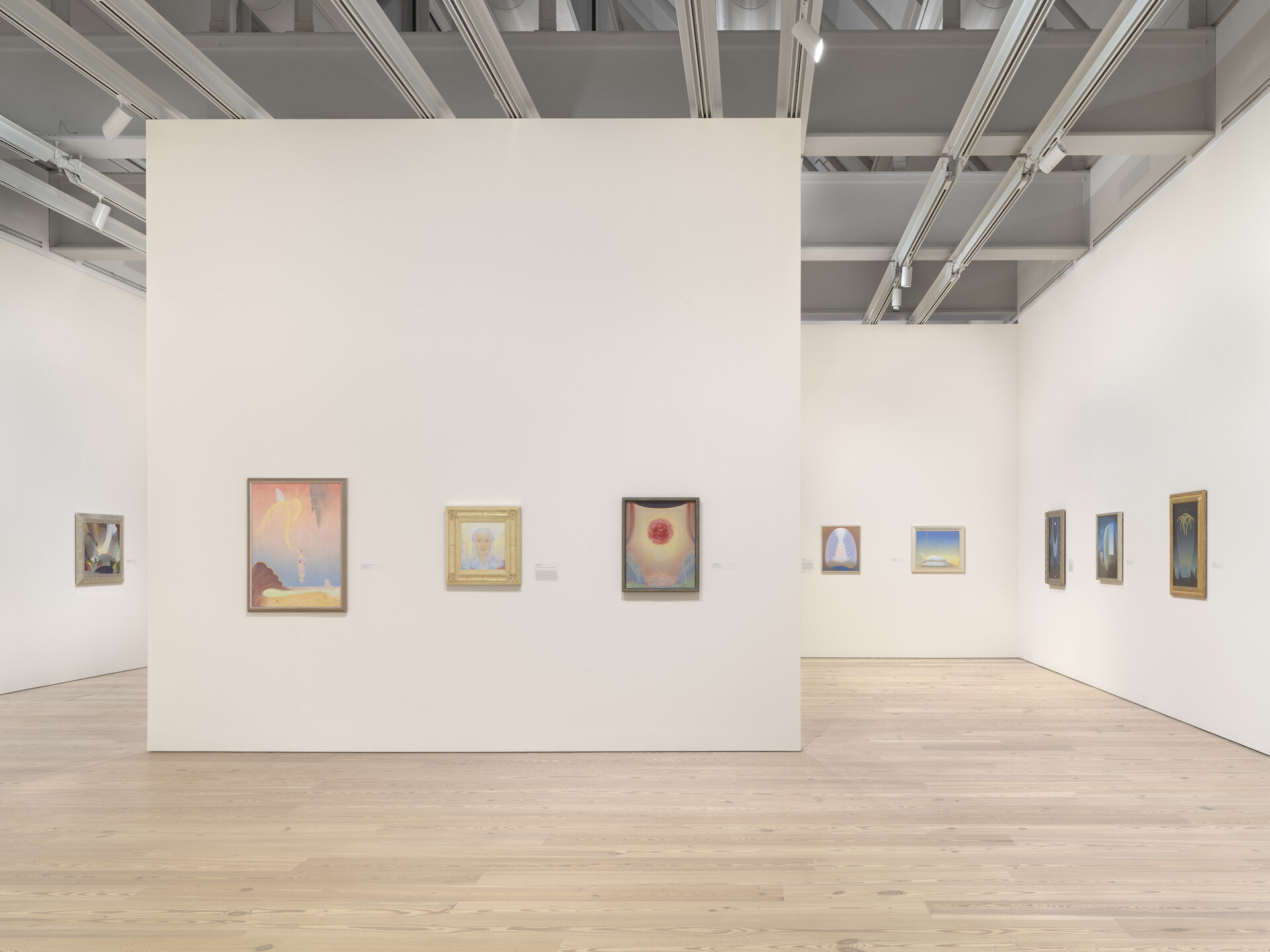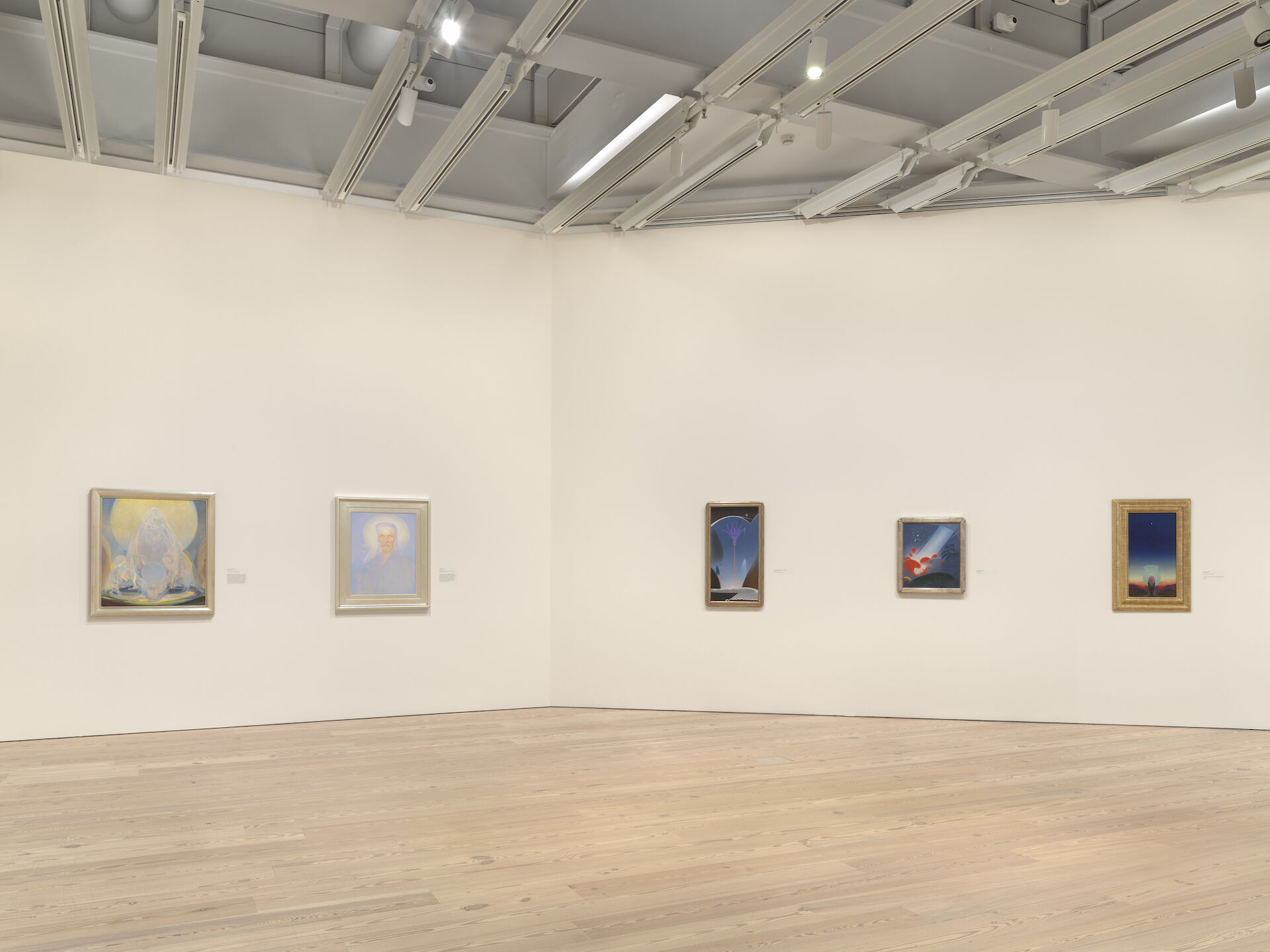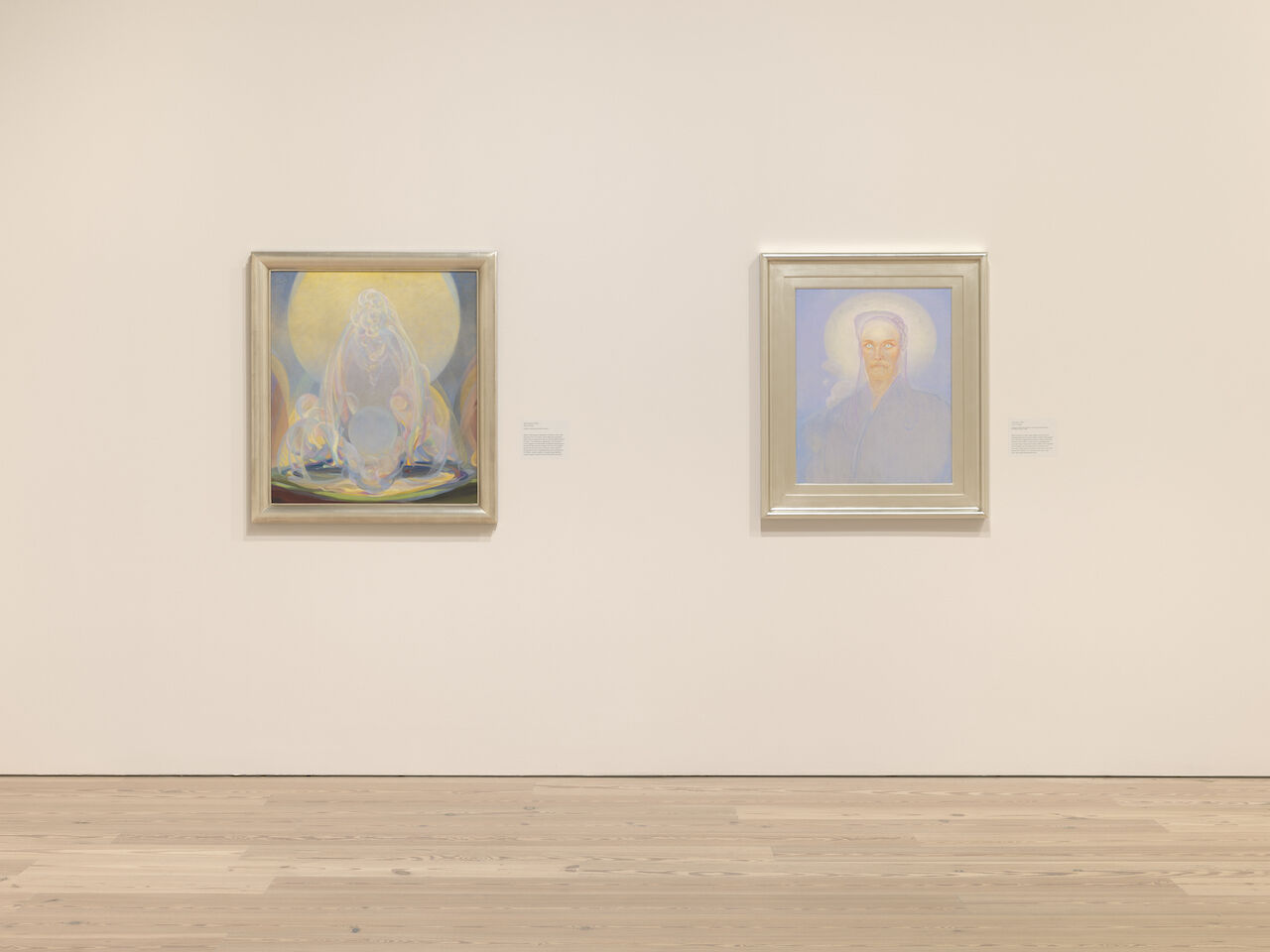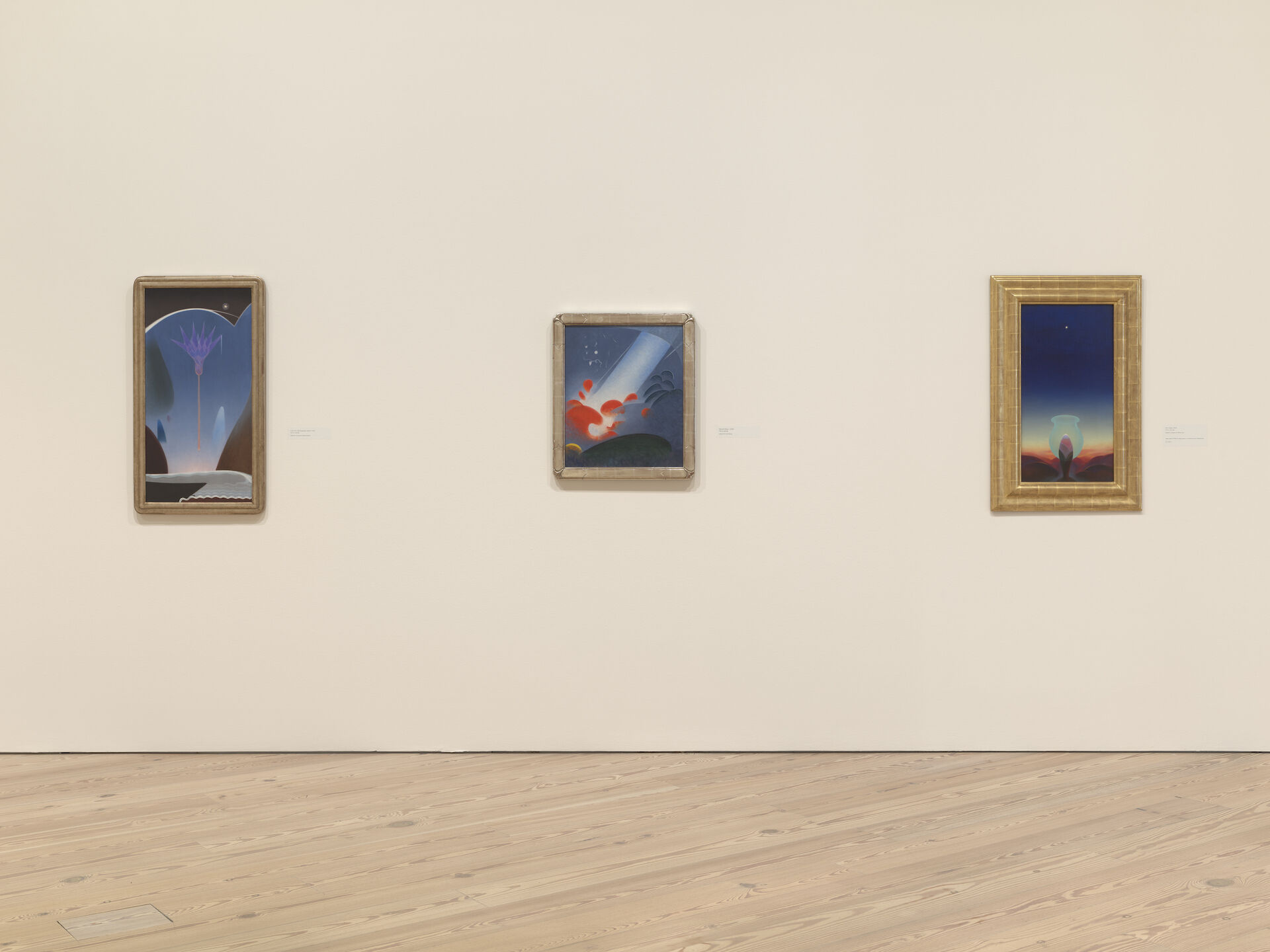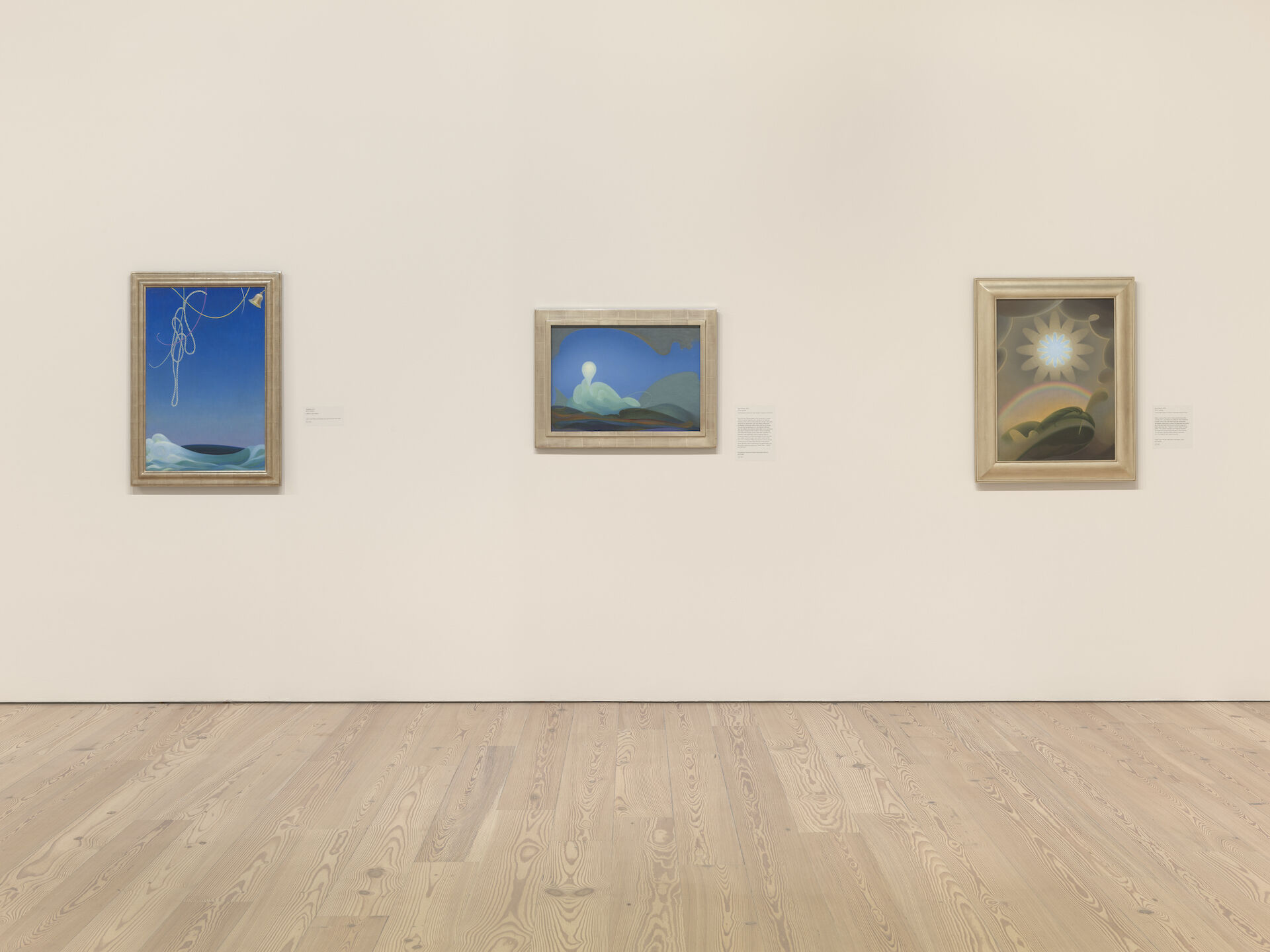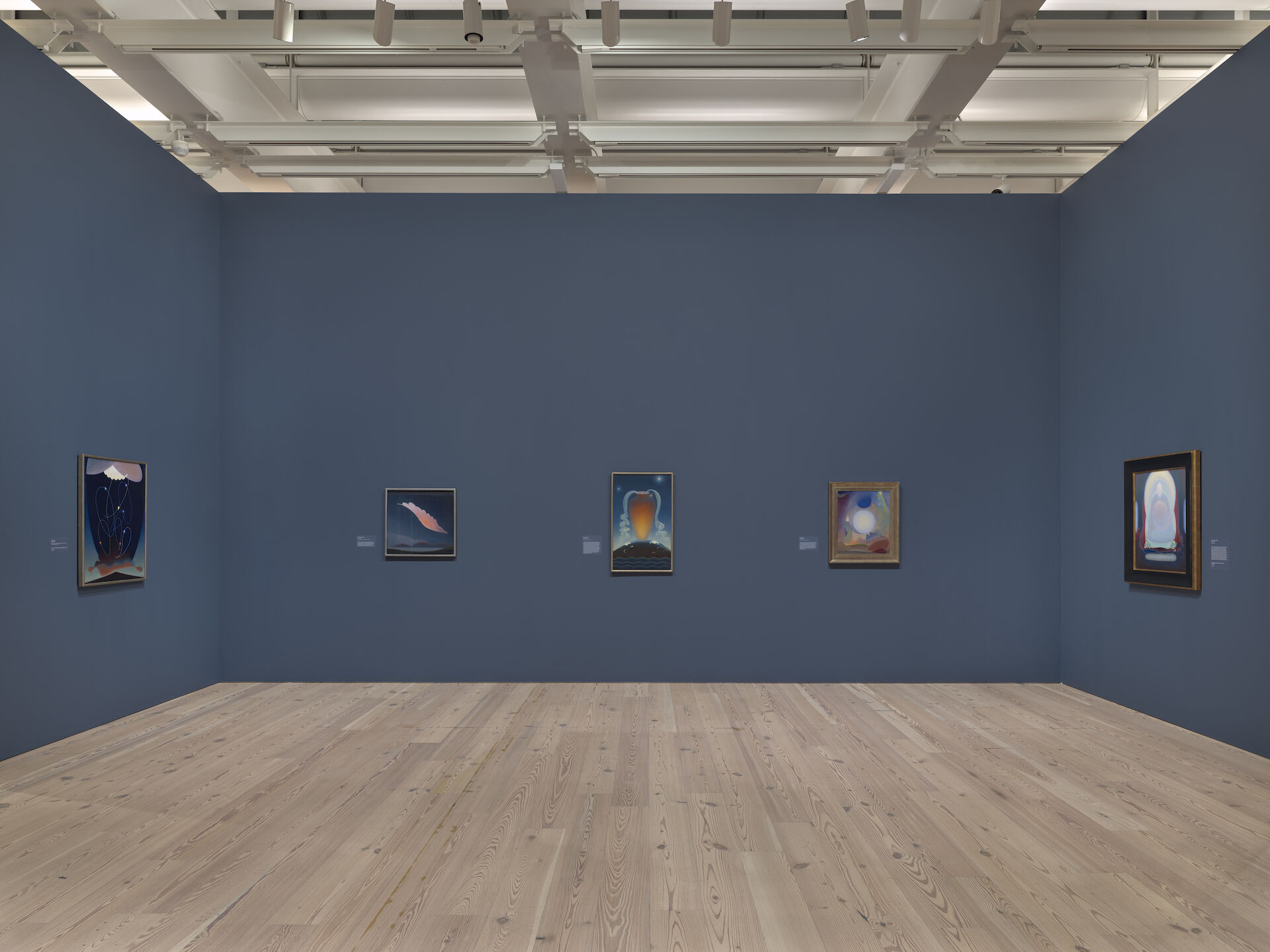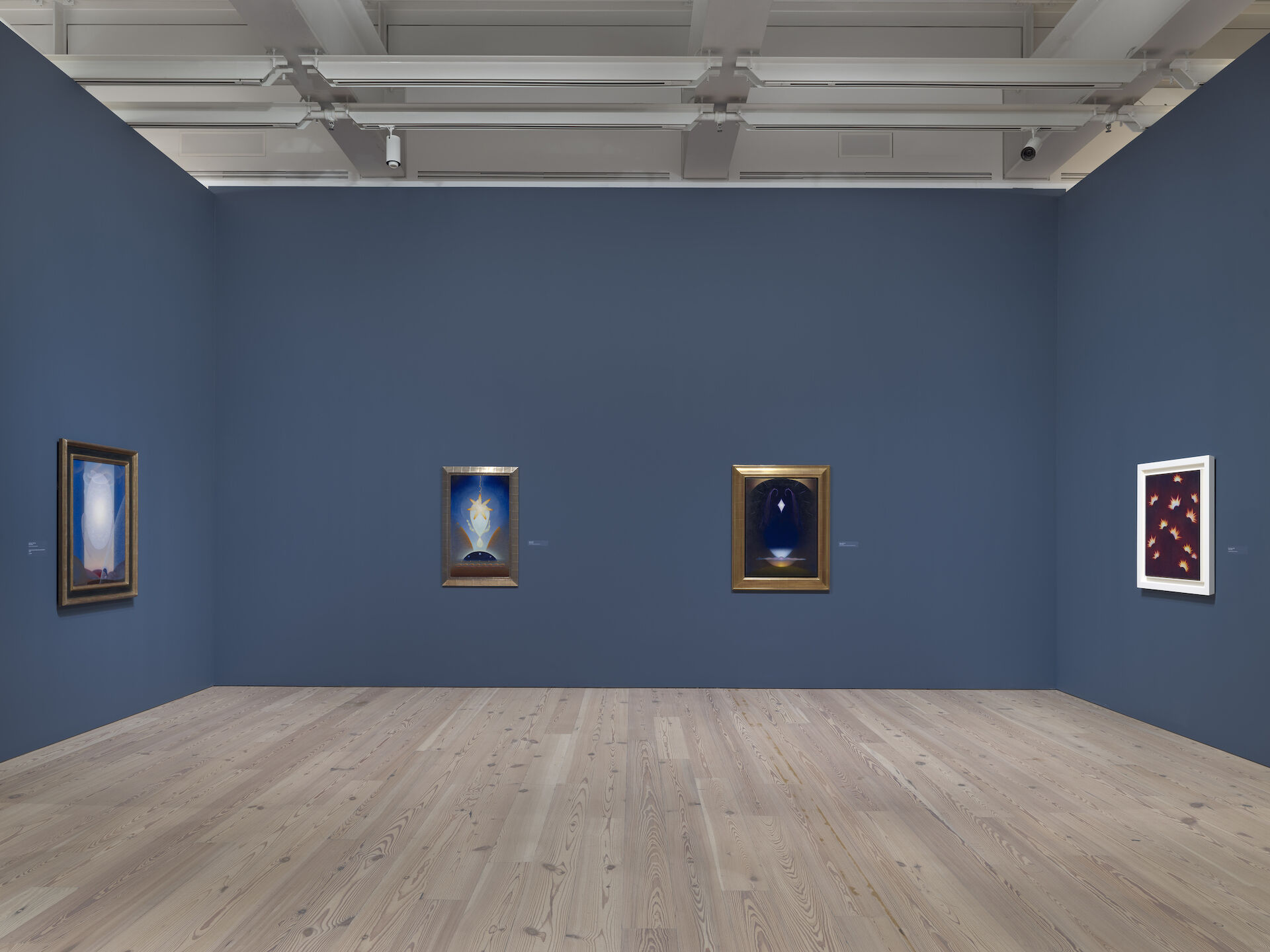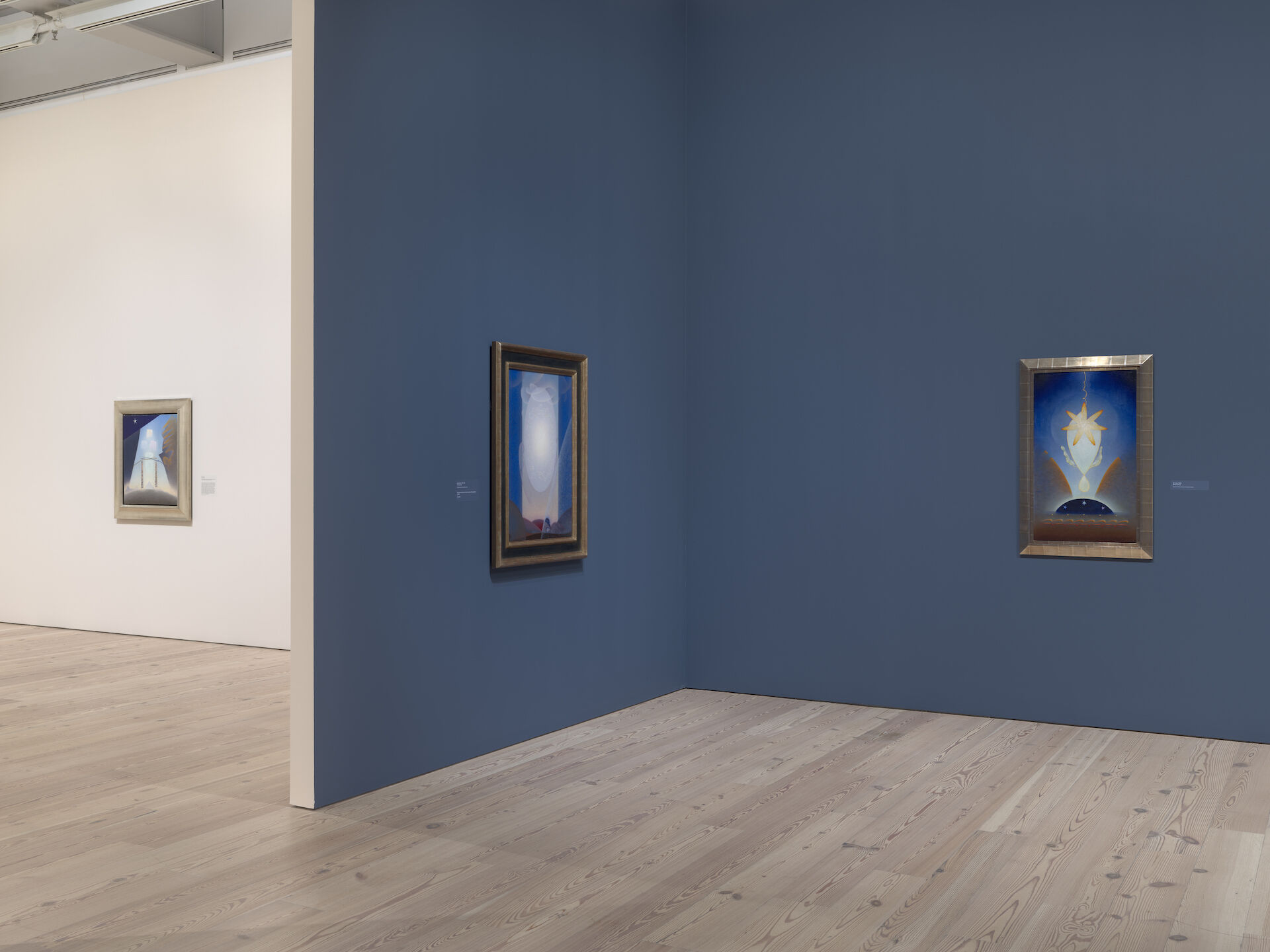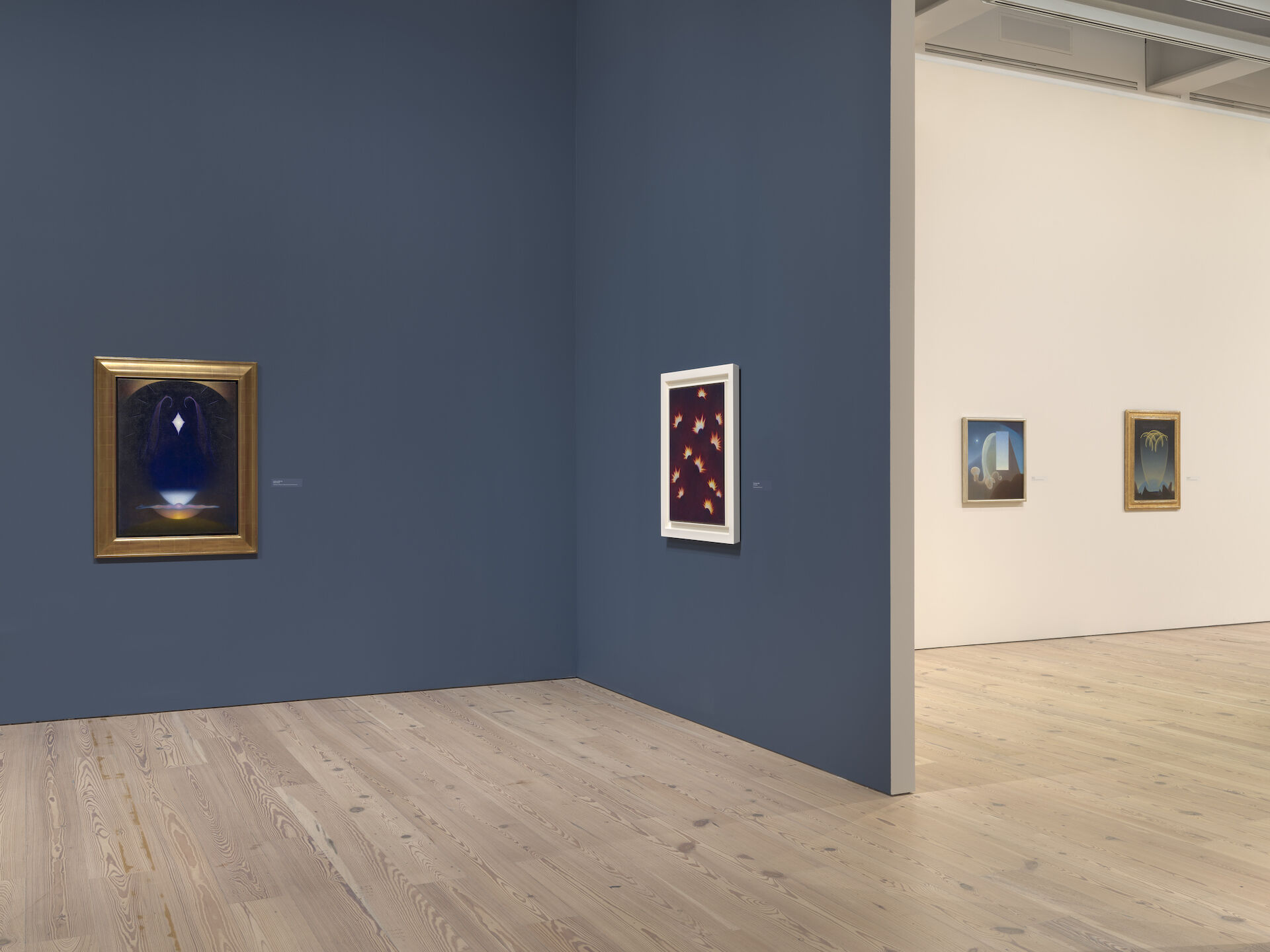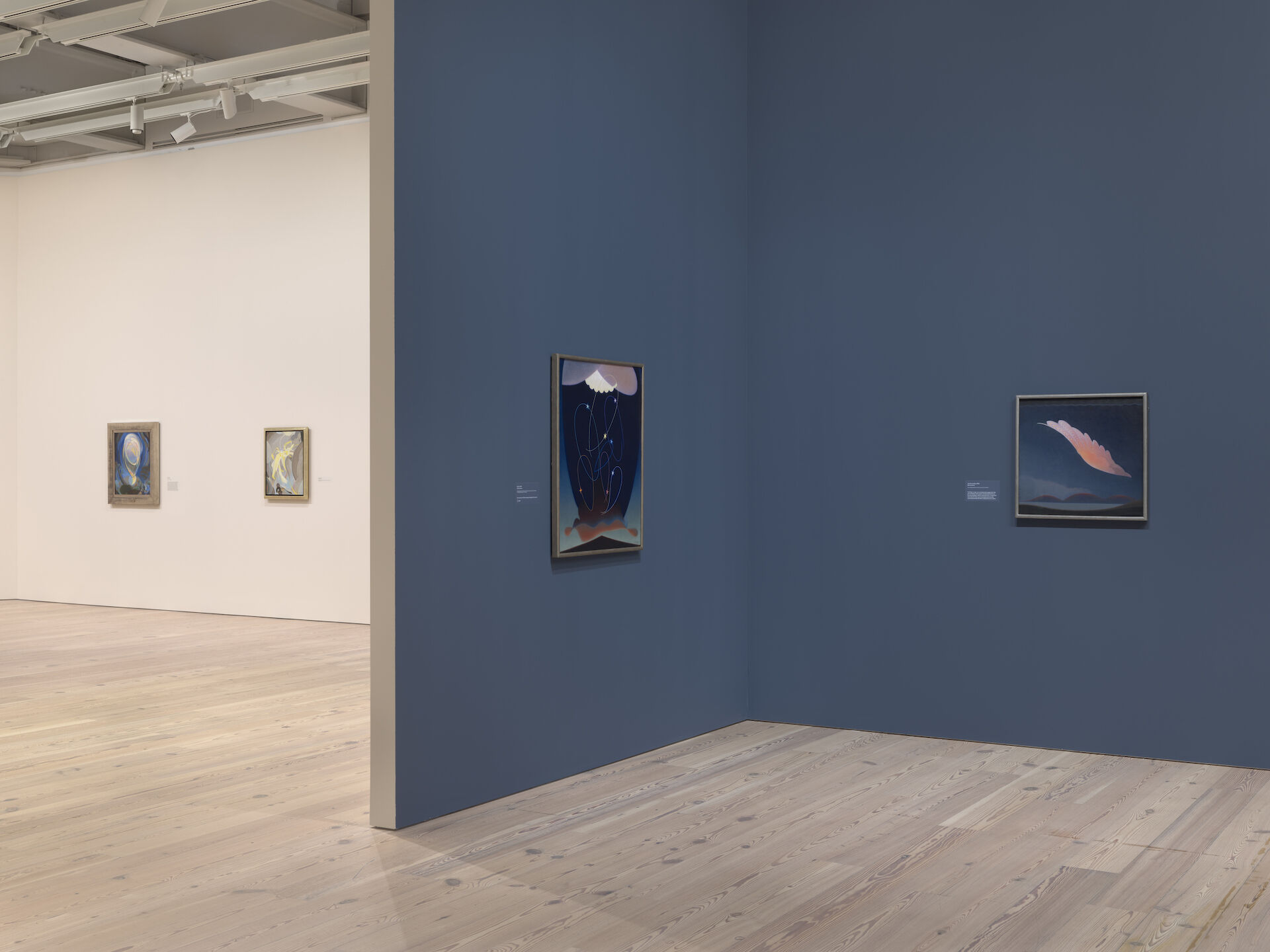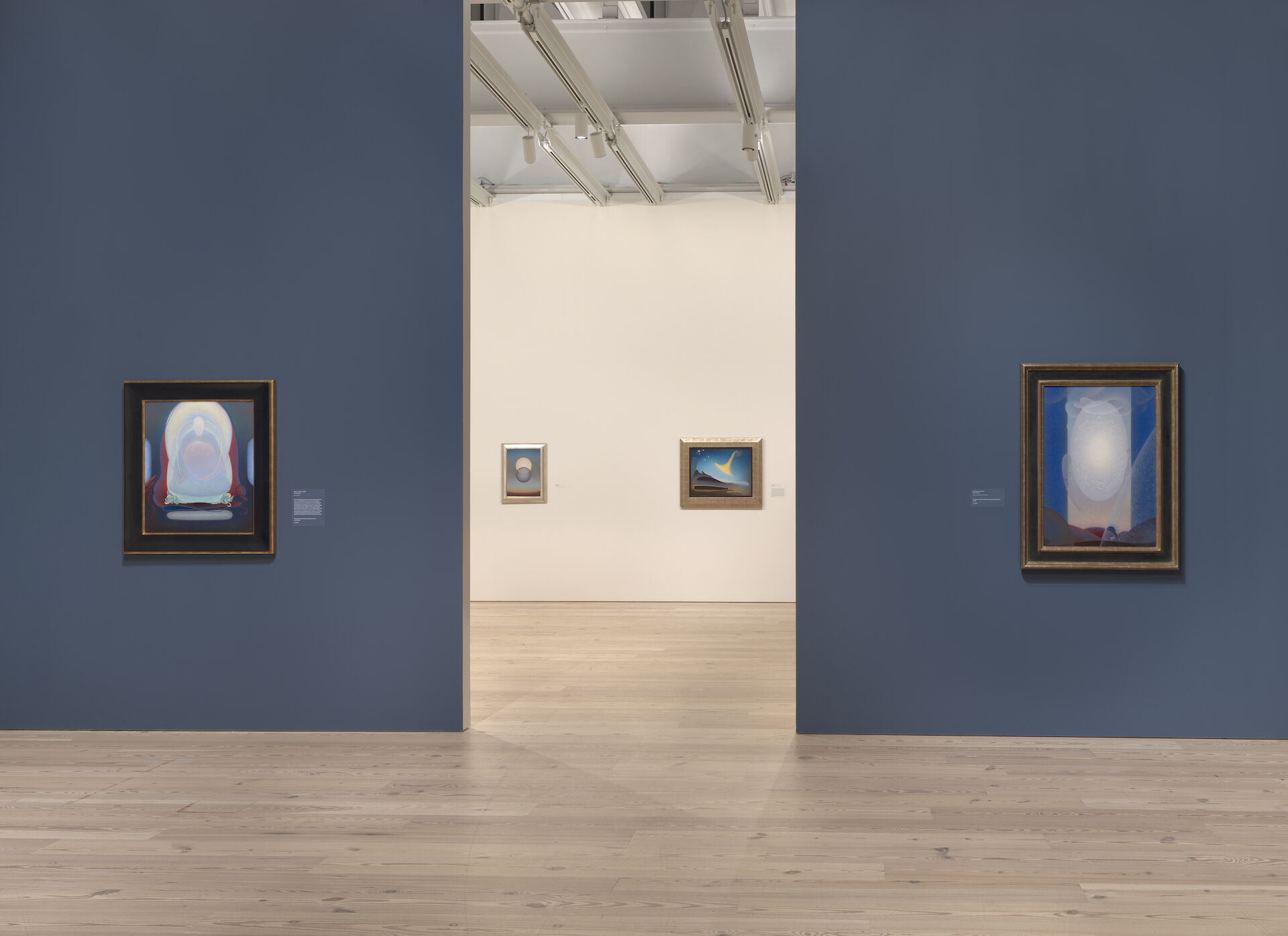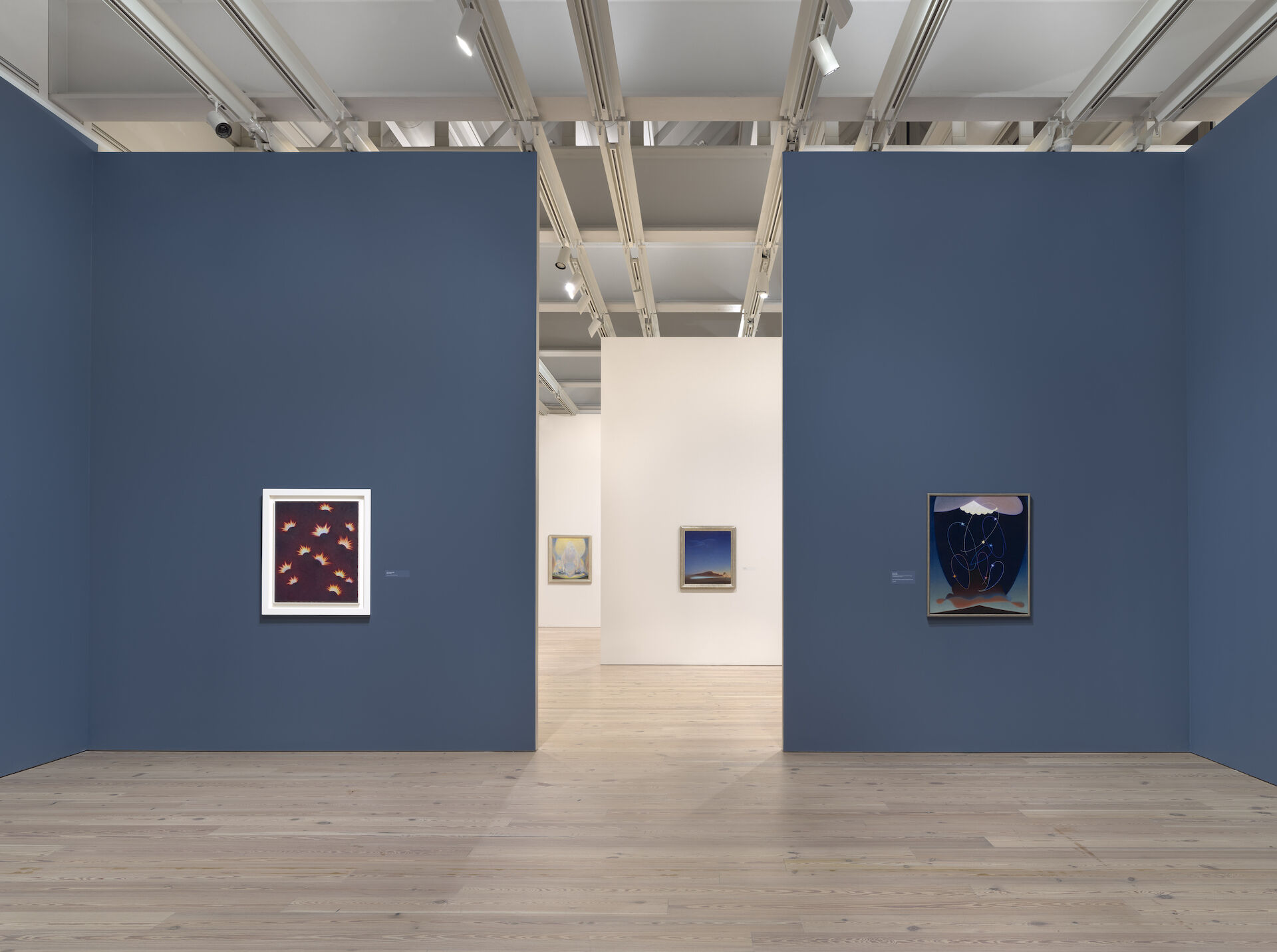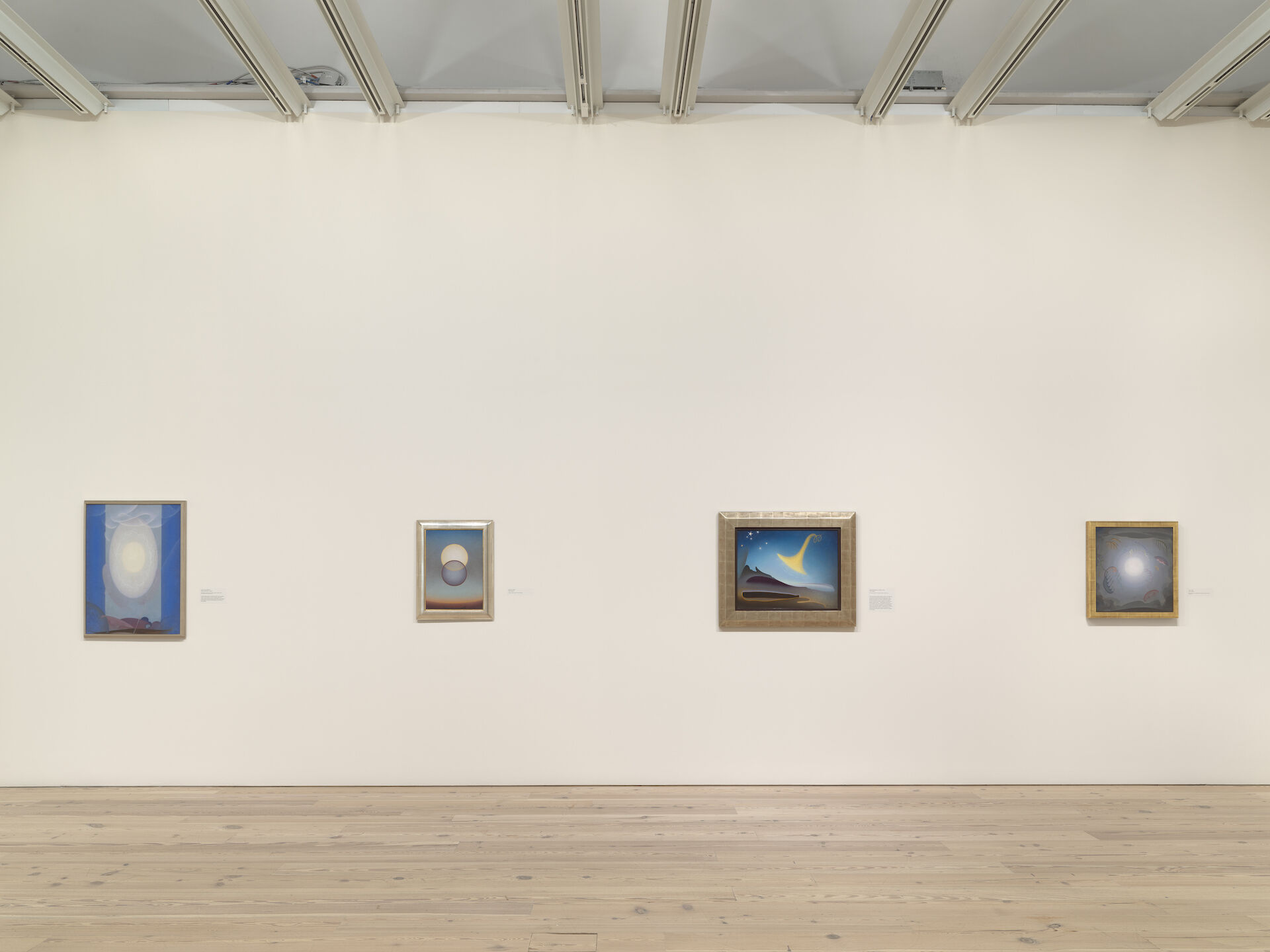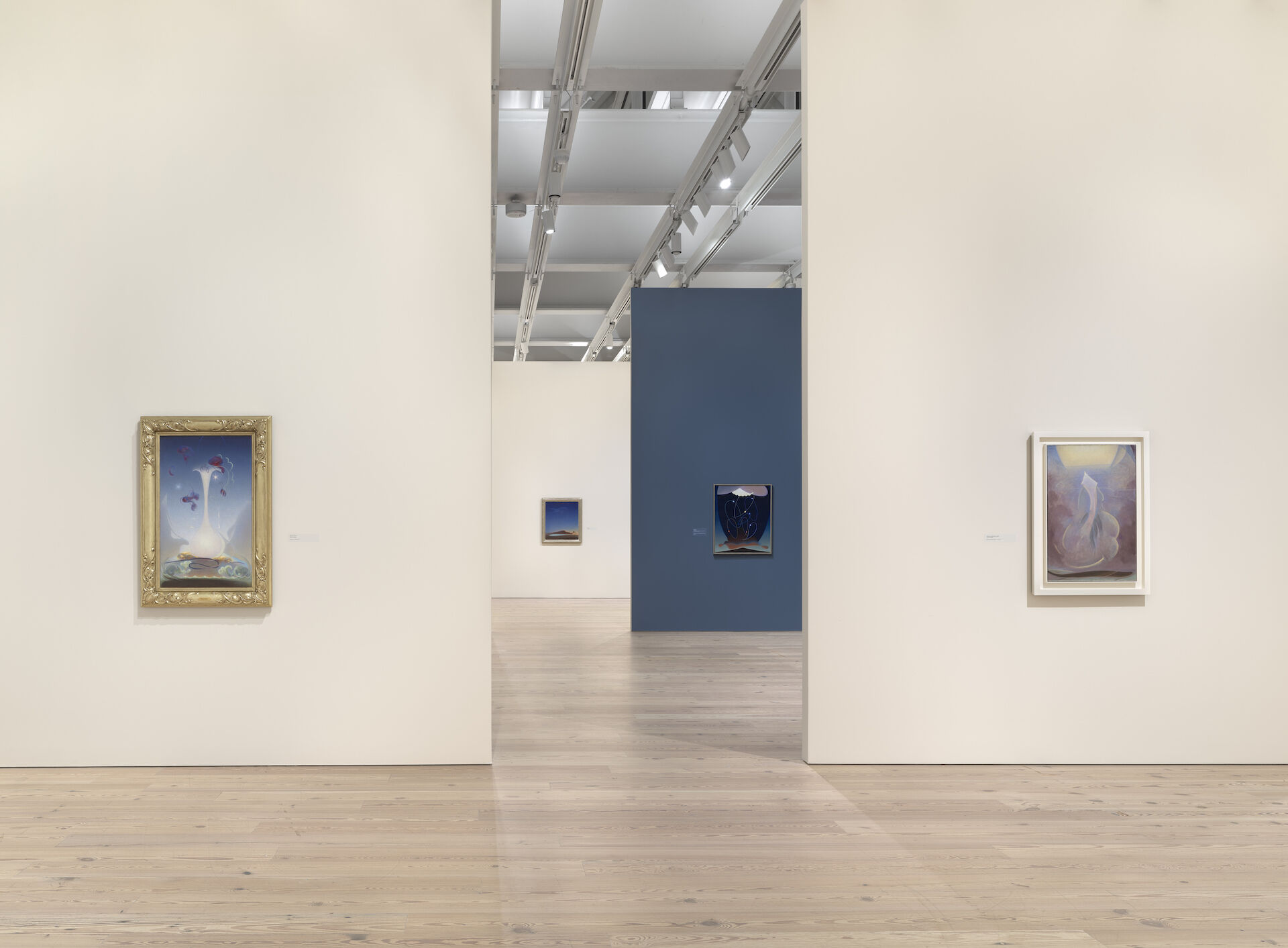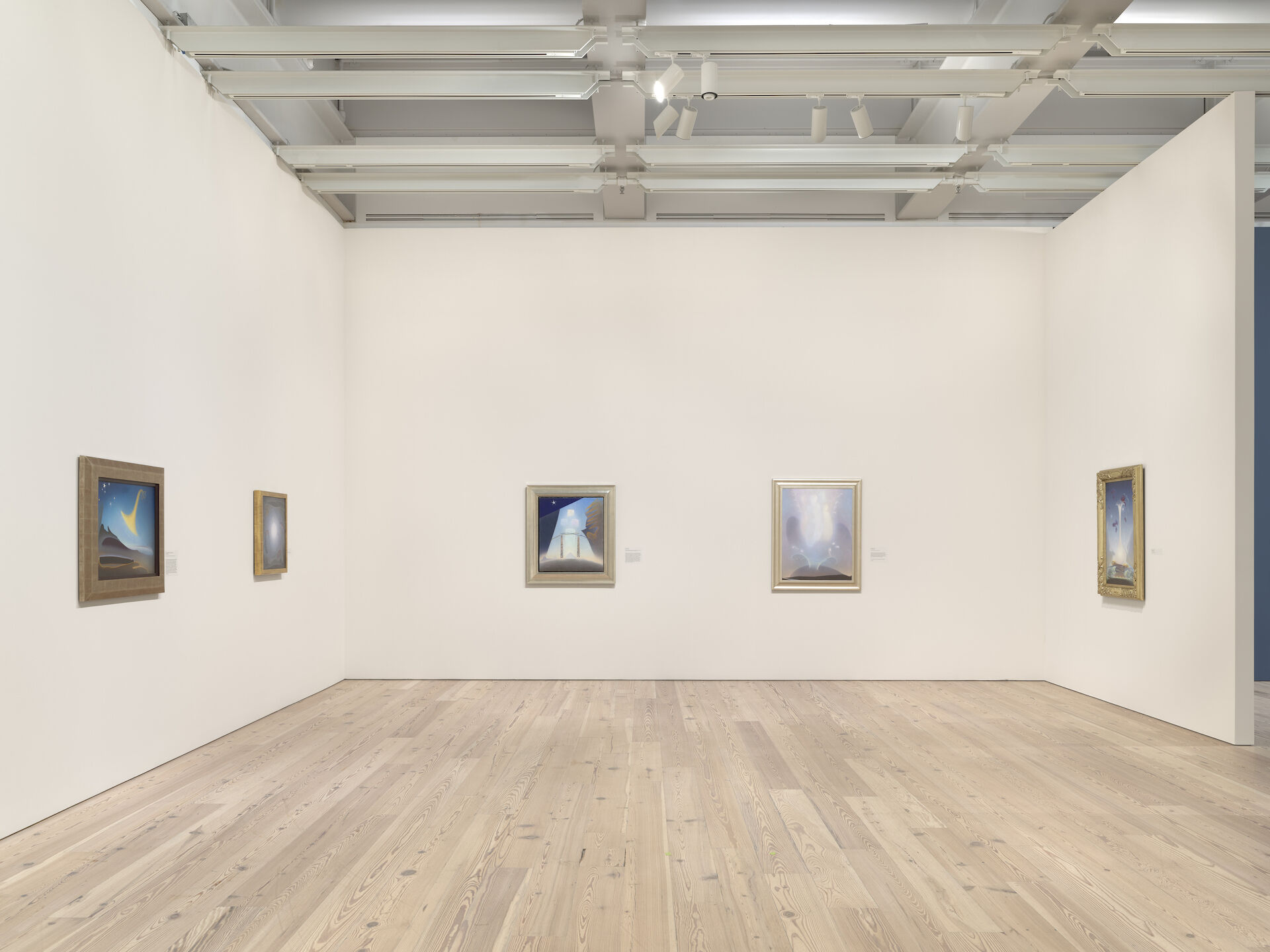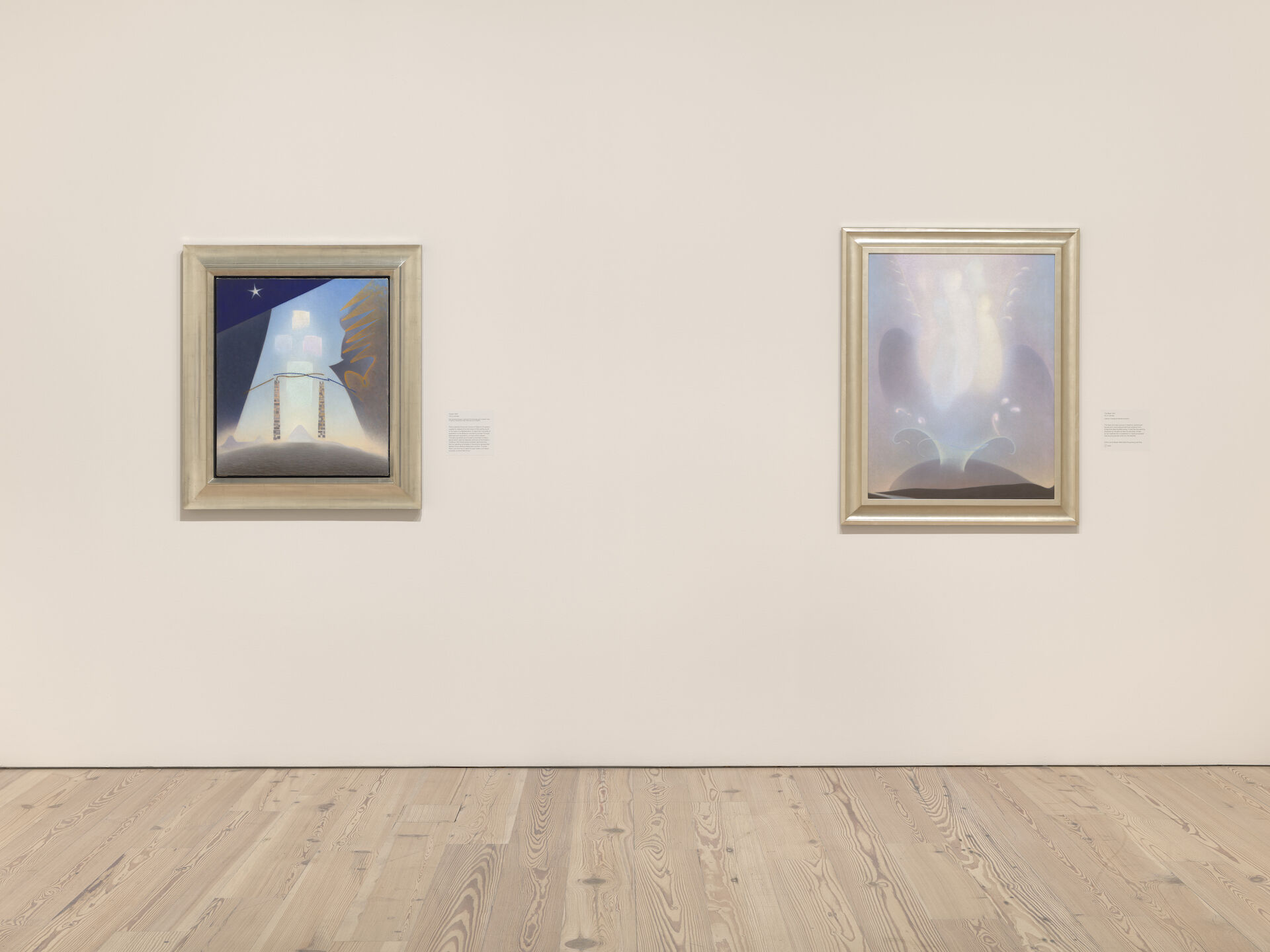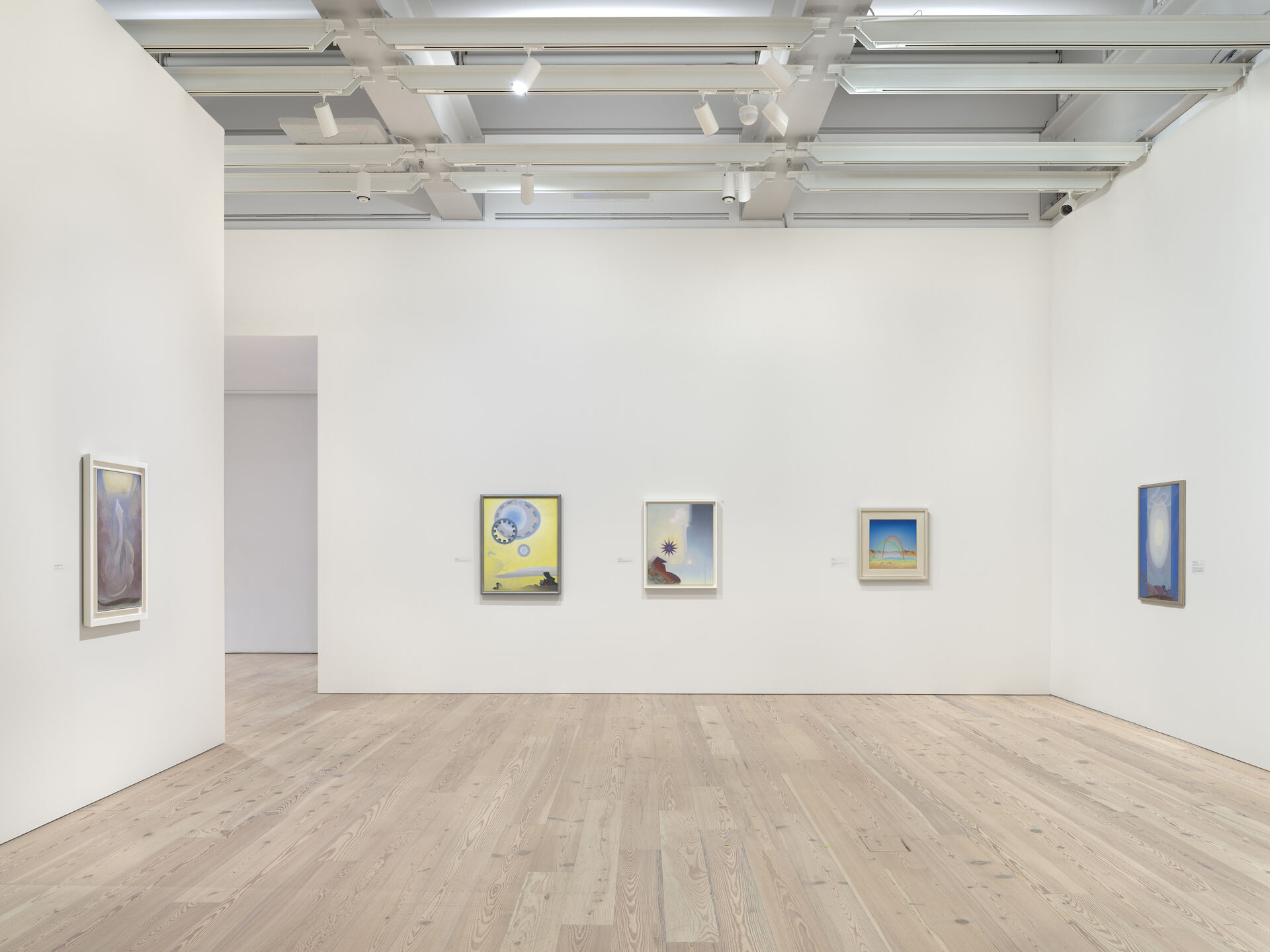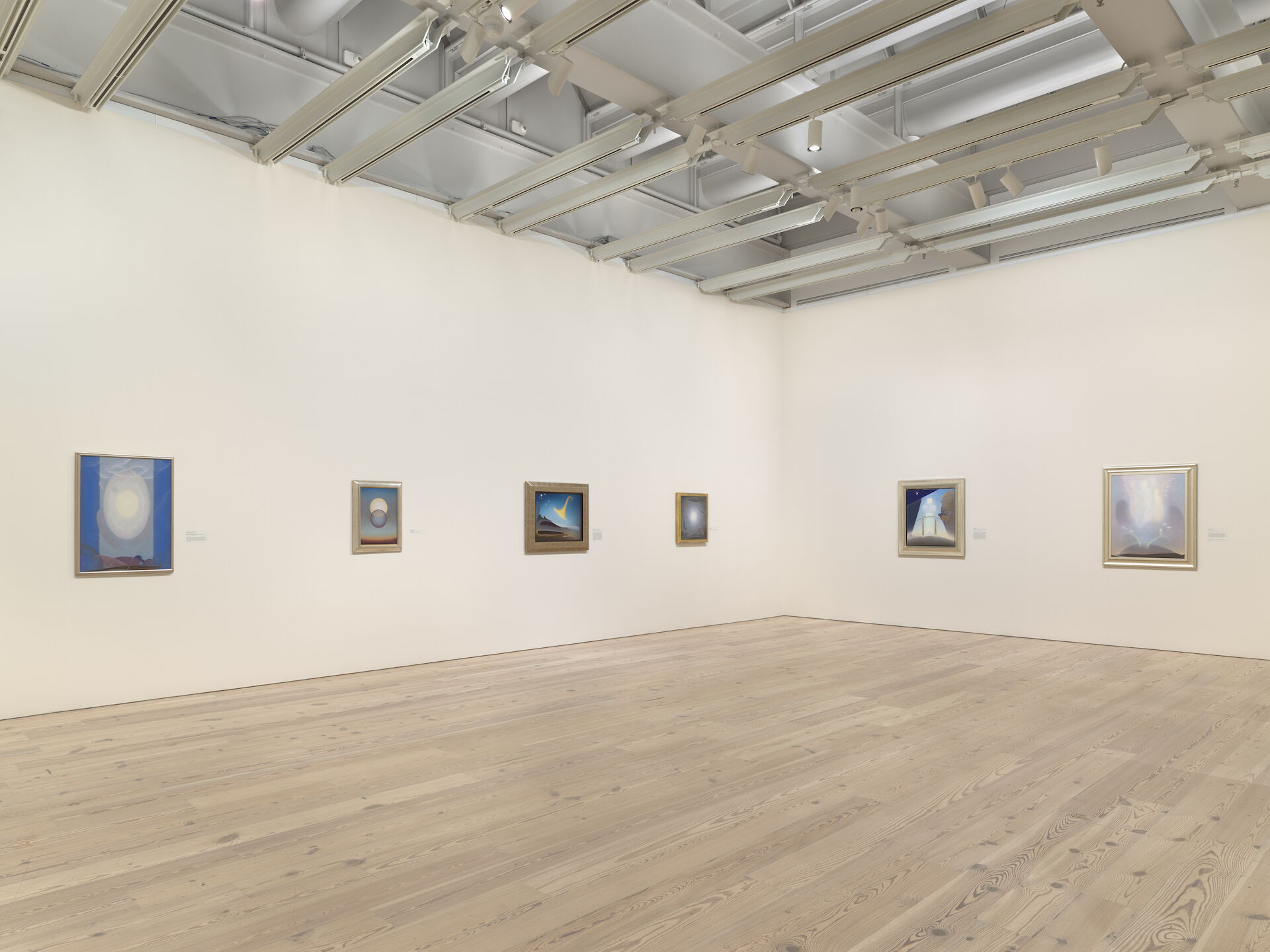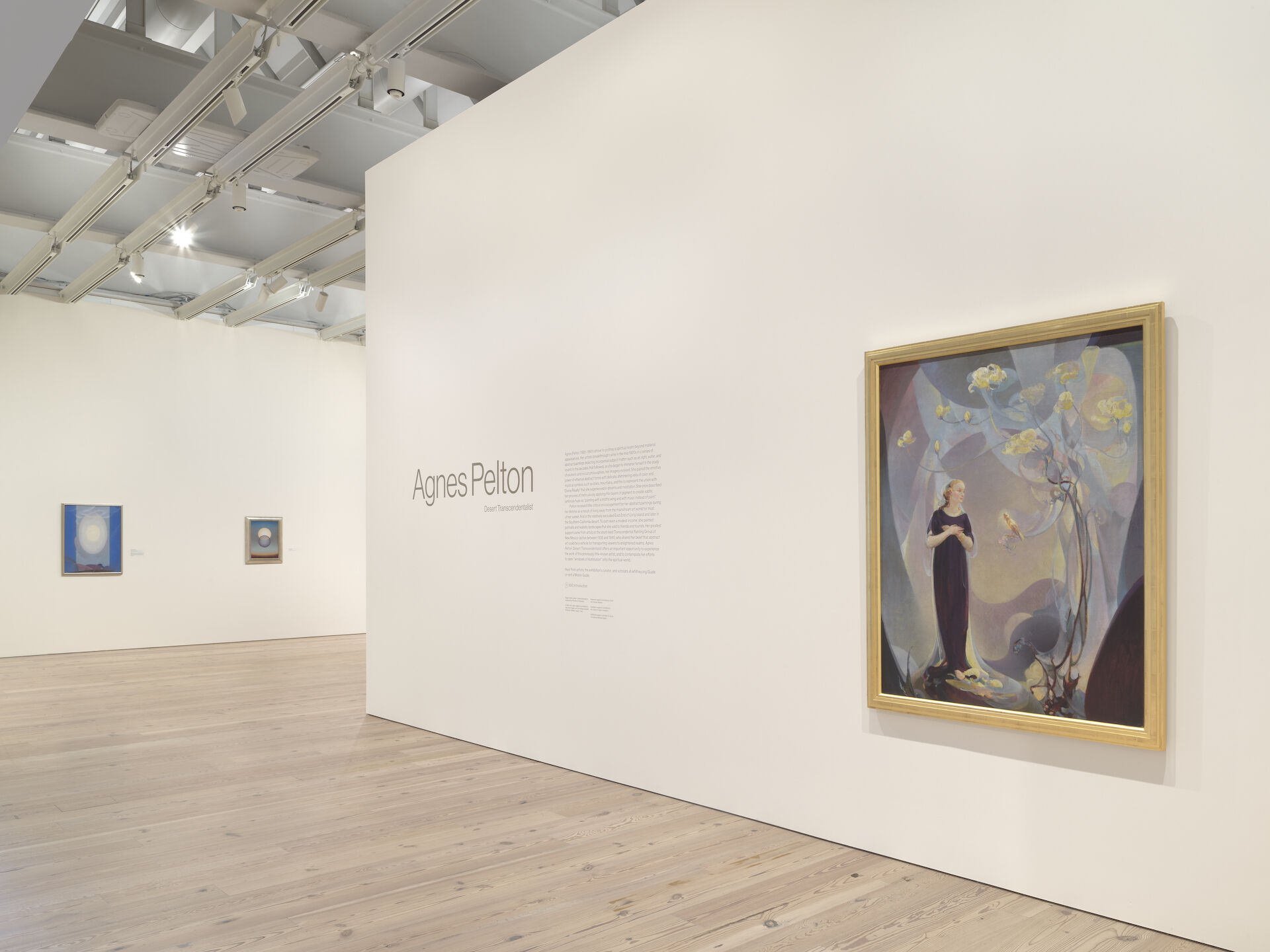Agnes Pelton: Desert Transcendentalist
Mar 13–Nov 1, 2020
Agnes Pelton: Desert Transcendentalist
Agnes Pelton (1881–1961) was a visionary symbolist who depicted the spiritual reality she experienced in moments of meditative stillness. Art for her was a discipline through which she gave form to her vision of a higher consciousness within the universe. Using an abstract vocabulary of curvilinear, biomorphic forms and delicate, shimmering veils of light, she portrayed her awareness of a world that lay behind physical appearances—a world of benevolent, disembodied energies animating and protecting life. For most of her career, Pelton chose to live away from the distractions of a major art center, first in Water Mill, Long Island, from 1921 to 1932, and subsequently in Cathedral City, a small community near Palm Springs, California. Her isolation from the mainstream art world meant that her paintings were relatively unknown during her lifetime and in the decades thereafter. This exhibition of approximately forty-five works introduces to the public a little-known artist whose luminous, abstract images of transcendence are only now being fully recognized.
Agnes Pelton: Desert Transcendentalist is organized by the Phoenix Art Museum, and curated by Gilbert Vicario, The Selig Family Chief Curator. The installation at the Whitney Museum is overseen by Barbara Haskell, curator, with Sarah Humphreville, senior curatorial assistant.
Agnes Pelton: Desert Transcendentalist is organized by Phoenix Art Museum.
In New York, major support is provided by Judy Hart Angelo and the Barbara Haskell American Fellows Legacy Fund.
Generous support is provided by Lynda and Stewart Resnick.
Significant support is provided by the Opatrny Family Foundation.
Additional support is provided by Georgia and Michael de Havenon and Sarah Pearsall and Michael Lippert.
In the News
"The times have caught up to the color-drenched mysticism of the American painter Agnes Pelton" —The New Yorker
"There is nothing quite like Pelton’s paintings in 20th-century American art." —The New York Times
"A survey of the spiritual-abstractionist painter's oracular art brings an offbeat brand of enlightenment to New York." —artnet News
"Agnes Pelton Finally Gets Her Due" —Vogue
"Agnes Pelton was a visionary who used her art to connect to a higher plane of consciousness via quivering biological forms and soft beams of light." —Observer
"[A] little-known artist whose luminous, abstract images of transcendence are only now being fully recognized."—ArtfixDaily
"It was a beautiful show, full of inventive shapes levitating in tinted atmospheres with evening stars and spiraling lines"—New York Times

